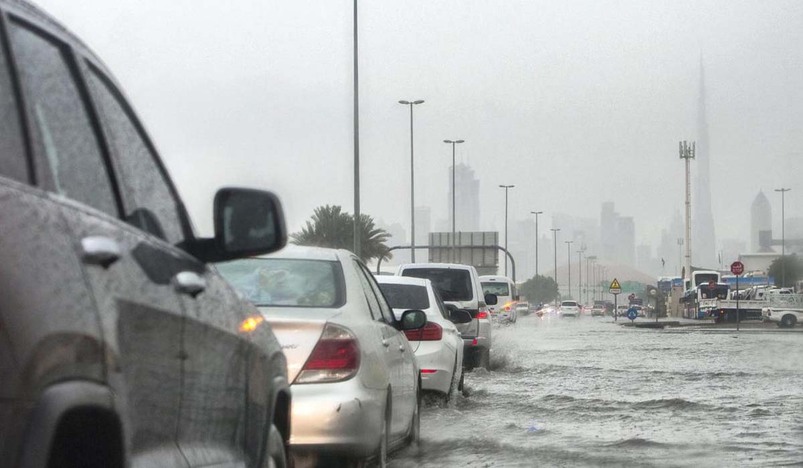
Rain in Dubai
The enhanced rain is created using drone technology that unleashes electrical charges into clouds in order for them to clump together and form precipitation
The monsoon-like downpour drenches a busy highway, causing tricky driving conditions for the stream of SUVs. Sudden waterfalls appear on the side of the road.
It would be a common sight in parts of Southeast Asia, but this is the United Arab Emirates, in the height of a summer heatwave which has seen temperatures regularly surpass 120F.
And according to the UAE’s National Center of Meteorology, the precipitation was enhanced by cloud seeding operations to increase rainfall in the Gulf country.
On Sunday, the UAE’s national weather service released video footage of the heavy downpours.
Its cloud seeding operations are part of an ongoing mission to generate precipitation in the Middle East country, which has an average rainfall of just four inches.
The cloud seeding operations work through manned aircraft firing chemicals such as silver iodide into the clouds in order to cause increased precipitation.
The National reported the heavy rainfall caused waterfalls to appear in the city of Al Ain and made driving conditions hazardous.
In an effort to curb the country’s sinking water table, the UAE invested $15 million in nine different rain-making projects in 2017.
One system set to be trialled in the UAE uses drones to shoot electrical charge into the clouds to increase precipitation.
The project is being led by researchers at the University of Reading in England. Professor Maarten Ambaum, who worked on the project, told the BBC in March that the UAE has enough clouds to create conditions conducive to rain.
The project tries to get the water drops to merge and stick when they receive an electrical pulse, “like dry hair to a comb”.
“When the drops merge and are big enough, they will fall as rain”, Prof Ambaum told the BBC.
Applying electrical shocks to clouds is preferred as it doesn’t require the use of chemicals.
The originally piece incorrectly referred to the use of a project from the University of Reading that used electrical currents to enhance rainfall.
.jpg)
Qatar Secures Place Among the World's Top 10 Wealthiest Nations
.jpg)
Hamad International Airport Witnesses Record Increase in Passenger Traffic

Saudi Arabia: Any visa holder can now perform Umrah

What are Qatar's Labour Laws on Annual Leave?
Leave a comment